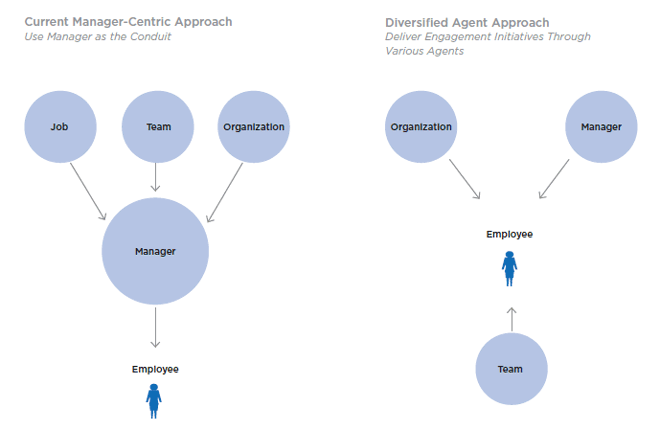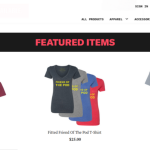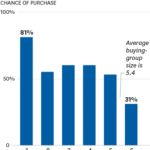learn how to affect and sustain worker Engagement
February eleven, 2015
Engaged managers, supervisors, and individual contributors outperform their peers by means of as much as forty three %. continuously, this performance benefit is as a result of the the engaged performer’s discretionary effort—the extra effort, initiative, and creativity they make contributions beyond the minimum wanted to get through.
alternatively, in most firms handiest about 17 percent of the team of workers are extremely engaged. If firms can double or triple this quantity, they are going to achieve dramatic features in productiveness, price keep an eye on, high quality, customer loyalty, and even inventory efficiency. Leaders can extend this advantage inside their crew and across their organization by way of implementing a transformation administration technique guaranteed to extend worker engagement. The technique is often called the Influencer model and is a strategic solution to each encourage and let workers to change their conduct and elevate their engagement in their individual roles.
The Influencer variation
the first step to enticing staff is to determine a handful of key behaviors, or vital behaviors, that drive employee engagement. as soon as important behaviors are recognized, companies will have to marshal a very important mass of influence strategies aimed toward those few important behaviors. settling on these explicit strategies is an important considering most failures stem from either a scarcity of focal point or underpowered solutions.
factors that influence employee Engagement
in step with analysis carried out via Gallup, employee engagement is influenced via two dimensions:
- objective: people who are highly engaged aren’t just piling rocks; they’re building a cathedral. They invest their work with a way of mission, passion, pleasure, and accomplishment. They believe their work is beneficial.
- regulate: people who find themselves extremely engaged aren’t meaningless cogs in a computing device; they see themselves as powerful and in keep an eye on. they have a way of their very own efficacy, access, influence, clout, respect, and talent to make a difference. They understand that they and their organization have the regulate required to accomplish their function.
The proof shows that people who find themselves low on both of these dimensions are disengaged. The analysis also unearths that different persons are drawn to different functions. Some highly engaged staff are enthusiastic about their consumers; others are captivated with their firm or group; still others are enthusiastic about their duties or career.
general, my analysis confirms that there are 4 sorts of purposes people connect to. workers want to connect with at least the sort of purposes to be able to change into engaged. staff who hook up with a couple of of those purposes have the next stage of engagement—a more durable stage of engagement that is higher in a position to resist disappointments and setbacks. beneath are the four purposes that drive engagement.
- clients: Some staff find which means within the contributions they make to others. for example, the trainer who achieves achievement through changing youngsters’s lives.
- group and staff: Some employees to find that means in their relationships with their staff or organization. They see themselves as part of a profitable workforce—and understand they’ve an important part in that workforce. for instance, a instructor who takes pride in her department, faculty, and group.
- personal development and increase: Some staff are fulfilled via alternatives to develop and increase. as an example, a teacher who loves to continually develop and strengthen on private goals.
- duties and career: Some people revel in and in finding satisfaction within the actions that make up their job or occupation. for example, the trainer who loves to be in the school room.
Leaders who assist folks connect to these purposes and gain control over carrying out them will reap the rewards of larger employee engagement. it’s also vital for leaders to actively shield towards engagement killers—actions or situations that undermine an individual’s sense of function and keep an eye on.
a few of these engagement killers are evident: as an example, a transformation that eliminates purchaser contact, a senior manager who minimizes a group’s accomplishments, or a coverage that ties employees’ hands. different engagement killers may also be harder to identify.
for example, engagement is fostered by means of flow. folks want to work on a significant activity for an uninterrupted period of time – in any other case they don’t experience the accomplishments and rewards of their work. due to this fact, interruptions is usually a type of engagement killers. These include, but are not limited to, emails, rapid messages, and get in touch with calls. Leaders can reinforce engagement by guarding in opposition to distractions and interruptions that pull individuals inside and outside of in any other case meaningful tasks.
Translating purpose into essential Behaviors
Leaders can construct employee engagement by using taking three types of moves:
- construct ties between the employee and the 4 functions. for instance, provide workers greater initiative or autonomy of motion associated to the needs, elevate non-public contact with the needs, and so forth.
- raise employee’s efficacy and influence to impact the 4 purposes.
- cut back disruptions that undermine connection to the 4 purposes.
These are moderately extensive moves a good way to lead to outcomes, however aren’t necessarily tailored to the unique scenario of explicit employees or organizations. in truth, these movements are a bit like the ordinary behaviors required for weight loss: consume less and train more. they are objectively perfect, but they fail to deal with the individual’s unique challenges.
consequently, leaders must tailor these worker engagement behaviors to their unique situation. It’s perfect to begin by using employing the behaviors and paying special attention to the times and cases which can be particularly difficult. These failure factors are the most important moments—the private pivot factors between success and failure.
Leaders should focus in on these a very powerful moments and ask themselves what it would take to succeed in those instances and cases. they are able to appear back for occasions after they succeeded in those moments and resolve which behaviors ended in that success. The ensuing crucial behaviors that leaders discover will have to be in line with the three familiar behaviors above, but will likely be particular to the distinctive cases of their group.
of course figuring out what to do to extend worker engagement is not the same as constantly executing on those actions. alternatively, understanding what to do is an very important first step. once that’s established, we can transfer to the guts of the Influencer variation: the six sources of affect.
Enlist a critical Mass of All Six Sources of influence
Leaders can use the six sources of affect edition to establish strategies that improve the important behaviors riding employee engagement. to ensure success, leaders will have to advance several methods inside every supply of influence. Our research shows that combining at least four, and ideally all, of the six sources of influence will increase your possibilities of success tenfold. below are examples of strategies within every source.
personal Motivation: On just about all bills, probably the most engaged staff are additionally probably the most inspired. fortunately, motivation may also be influenced. Leaders can raise non-public motivation by linking to workers’ current values through personal experience and shifting stories. right here’s how they are going to hyperlink particularly to the 4 functions that force employee engagement:
- connect with clients: Use “mission moments” to tell transferring tales that spotlight the human impact workers have on shoppers. Have employees meet with clients.
- join with group and team: Use staff-constructing activities to foster personal connections throughout the staff. Create face-time with leaders from across the group to create personal connections up the chain of command.
- connect with personal development and increase: Have employees spend time with colleagues who are one or two occupation steps in entrance of them.
- join with duties and occupation: Have employees attend skilled conferences to foster nearer ties and identification with their career.
personal skill: Leaders will have to not assume each disengaged worker is simply unmotivated. steadily, what stands in the best way of performance is the employee’s capability to do what’s required of them. to verify workers are enabled, leaders wish to construct understanding and educate abilities. begin with the aid of educating employees in order that they have in mind how their moves strengthen the four functions that power employee engagement. additionally, help them acquire skills so they achieve greater control over their job a important conduct of worker engagement.
- join with shoppers: workers in regards to the direct influence they have on clients. as an example, one hospital had recovered patients discuss in regards to the alleviation and help each and every worker gave them throughout their health center keep—from nurses and physicians to laundry employees and cafeteria employees. construct practical skills to lend a hand employees leverage their person impact.
- join with organization and crew: teach staff on how they are able to impact the organization and senior leaders. Share real behaviors that are valued by means of administration and communique tactics with a purpose to help them get their enter heard by using leadership.
- connect with private development and increase: be certain that workers remember how their person roles and tasks work inside the group. Use training and training to assist them take care of their career route.
- join with duties and profession: supply workers coaching choices for improving their skilled knowledge and abilities.
- cut back interruptions and distractions: enhance staff’ abilities to deal with interruptions and distractions.
Social Motivation: by no means underestimate the ability of peer force—each certain and negative. ensure that formal and casual leaders create, acknowledge, and reward the links between staff’ day-to-day jobs and the four functions that pressure worker engagement. be sure leaders permit workers to have the sure influence of comrades that’s so crucial to increasing engagement.
- join with customers: Create tighter purchaser relationships. as an instance, have employees strengthen a selected set of customers.
- join with organization and group: Create interdependencies throughout the staff with the aid of encouraging groups to work together, as a substitute of independently.
- join with personal development and boom: Use mentors and create opportunities for workers to have interaction with leaders across the organization.
- join with tasks and occupation: advance professional mentors. encourage employees to nurture non-public connections with best mavens inside of and out of doors the firm.
Social means: Take the affect of peers one step additional via involving formal and casual leaders to empower and enable their direct reviews to have higher regulate over engaging in the needs that pressure employee engagement. Create supportive groups that raise collective efficacy.
- connect with consumers: build collective efficacy by means of developing groups which have a higher influence and affect than any individual.
- join with group and group: Use forums to provide workers more straightforward methods to examine from and influence leaders across the group.
- join with personal construction and increase: again, use mentors to help workers navigate the opportunities that exist throughout the group.
- connect with tasks and occupation: Create “communities of practice” and “centers of excellence” that encourage employees to fortify their abilities and standing in their occupation.
- scale back interruptions and distractions: lend a hand insulate employees from interruptions and distractions because of peers, leaders, and clients.
Structural Motivation: Structural motivation includes rewards and incentives which might be powerful motivators. make sure efficiency evaluations, pay, advertising, and incentive methods make stronger workers’ efforts to accomplish the needs that drive employee engagement. on the other hand, defend against reward systems that undermine staff’ efficacy and engagement.
- connect with shoppers: to find ways to make use of small rewards to acknowledge employees’ contributions to clients. make certain current reward and promoting methods don’t discourage robust customer connections.
- connect with organization and team: Reward teams, no longer simply folks. be certain that current reward techniques strengthen teamwork.
- join with personal construction and increase: make sure that staff remember how their boom opportunities will hook up with rewards.
- join with duties and profession: to find tips on how to reward staff who wish to grow to be technical specialists, and not move up into administration.
Structural means: Structural ability entails relying on the ability of the surroundings. Leaders can harness the environment to make it easier for employees to perform the purposes that drive worker engagement. for example, merely removing boundaries that create interruptions and distractions can do a lot to extend engagement.
- join with consumers: alternate the organizational construction, the physical structure, and the information streams to make the hyperlinks to buyers more direct, seen, and effective.
- join with organization and crew: exchange the geography and bodily layout to increase contact with group members and leaders across the organization.
- connect with non-public construction and boom: make sure the organization has clear and effective building and profession paths to apply.
- join with duties and career: Create alternatives for people to learn, develop, and make a contribution of their profession.
- cut back interruptions and distractions: Use know-how, instruments, and schedules to cut back interruptions and distractions.
This edition outlines a number of tactics and techniques to both motivate and permit employees to engage with their individual roles and obligations. The challenge is to assemble a powerful aggregate of all six sources of affect. while these explicit methods are prone to create large positive aspects in engagement, understand that totally different staff will join with totally different functions. for this reason, leaders want to be certain they have got built a host of ways to seize individuals along the whole spectrum of engagement. relating to rising worker engagement, a pace-setter’s purpose is to create sturdy connections for all of their staff, and to connect them to as most of the four functions as possible. The more suitable these connections are the extra likely staff are to engage.
trade & Finance Articles on business 2 community
(131)













